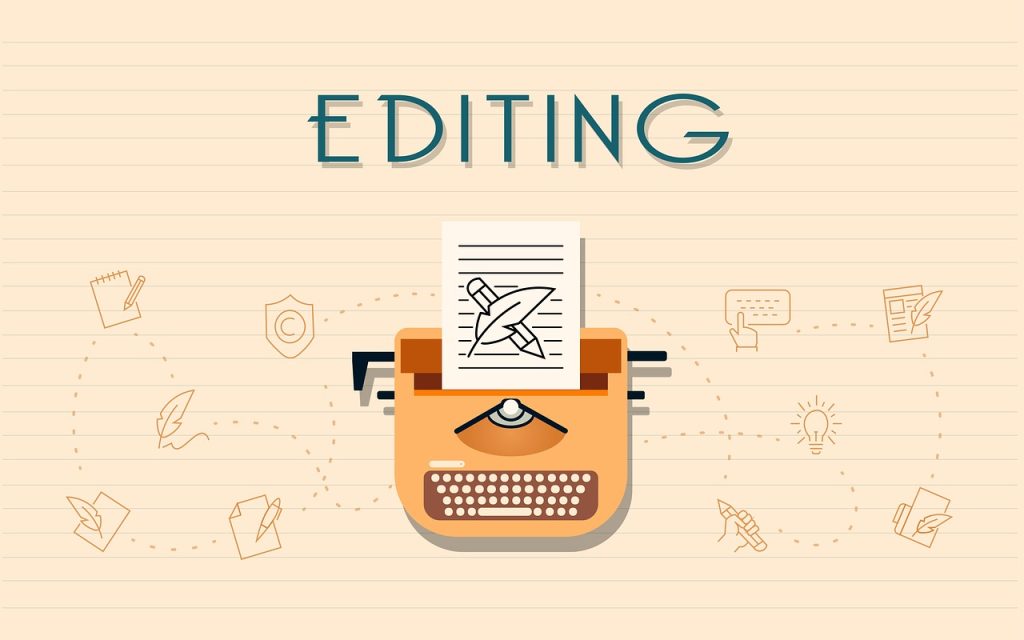
In addition to ghostwriting, I also edit. My editing days go back to 1990 and my days working in newspapers, where the editing mantra was, “The fewer the words, the more powerful they are.”
Once a manuscript is completed, it’s really important to have a neutral set of eyes look at it. I tell all my ghostwriting clients, “I can only do a cursory edit. You really should get a professional to look at it. I can’t be the one because I’m too close to the project.” I’ve been reading and re-reading the copy for so long now—ghostwriting projects often take a year—that I’m missing obvious errors that somebody who’s never seen the work will surely catch.
There are a lot of different kinds of editors doing different kinds of editing. Here are some to consider:
Developmental — I’ve written about this type in detail back in May and June, so if you want more detail, read those posts. To sum up, developmental editing focuses on the big picture. It involves asking questions such as:
● What are you trying to say?
● Who is your audience?
● Are you reaching them with what you’ve written?
● What are your main points, lessons, themes, issues or goals, and are you articulating them clearly so your audience understands them?
● Is your manuscript structured in such a way that it’s easy to follow, and does it follow a logical path so the reader doesn’t get lost or confused?
A developmental editor will act as a reader and help you gain perspective and show what works and what doesn’t from the reader’s point of view. Then the editor will make suggestions on what needs to be done so that you can fix the problems.
If you’ve heard the terms structural editing, content editing, comprehensive editing, story editing, or macro editing, those are all synonyms for developmental editing.
Copy — When people talk about getting their work edited, this is the type they’re most likely referring to. A copy editor gets into the weeds and focuses on
● Mechanics, such as spelling, grammar, and punctuation;
● Word choice. Are words used correctly? Is there any jargon that needs to be explained?
● Clarity. Is it easy to understand the main idea of each sentence and paragraph?
● Style and consistency. Is the manuscript’s “voice” consistent throughout? Is the tone and word choice appropriate for the intended audience?
● Fact-checking. Are the facts accurate and consistent?
● Flow between ideas. Are transitions logical and easy to follow?
● Formatting. Are titles all capitalized? Are chapters divided properly? Are the font, spacing, and text size consistent?
Proofreading — A lot of people confuse copy editing with proofreading. They are similar, but a proofreader is the last person to examine the document before it’s published. Any lingering grammatical, spelling, punctuation, capitalization, design or formatting errors get caught here.
Line — This is similar to copy editing in that line editors also look at word choice, style, and grammar. They seek out and fix extra or unnecessary words, run-on sentences, redundancies, tonal shifts, unnatural phrasing, and confusing narrative digressions. They also tighten paragraphs.
But line editors also focus on more creative uses of language and how the word choice affects how clearly the story is communicated. Is the language clear, fluid, and pleasurable to read? Does it convey a sense of atmosphere, emotion, and tone? Do the words convey a precise meaning, or are there broad generalizations and clichés?
Line editing doesn’t focus on grammar, spelling, and punctuation errors, although if an editor sees some obvious ones, they can be cleaned up. If you need a book editor in San Diego to help you along the process, reach out to me.
Next: More about line editors and their importance when it comes to word choice.
If you want to discuss this or any other topic, feel free to reach out. Click the Contact tab and leave a message.
Let's Start A New Project Together
Contact me and we can explore how a ghostwriter or editor can benefit you.
